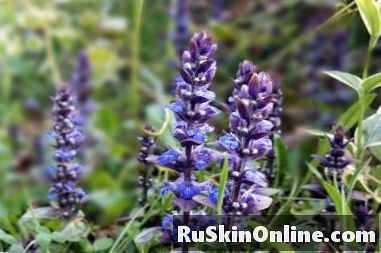
Content
- Günsel - The almost forgotten edible weed
- Edible Günsel
- Yellow Günsel
- Ajuga pyramidalis
- Crawling Günsel
- Use Günsel in the kitchen
- Tips

Günsel is edible and healthy
Günsel - The almost forgotten edible weed
The genus of flowering Günsel (Ajuga) includes about 65 different species of the mint family. Günsel are everywhere in Europe. West Asia and partly also North Africa widespread. Many of our native species can be collected as wild herbs and used in the kitchen and / or are among the traditional medicinal plants used in folk medicine.
Previous article Günsel in the lawn - prevention is better than removingEdible Günsel
To the edible or usable as medicinal herbs Günseln belong primarily
Yellow Günsel
The yellow Günsel is native to the Mediterranean, but has been native to Germany for a long time. The up to 15 centimeters high, highly fragrant plant is mainly found on calcareous soils, mainly on fields, and falls due to the intense lemon yellow flowers on strong. The herb, also known as "weedwort", was once used primarily for the treatment of strokes. The yellow Günsel is on the Red List of endangered species in Germany and should therefore not be collected.
Ajuga pyramidalis
In contrast to the creeping Günsel the pyramid Günsel does not form foothills, but grows up to 35 inches upright in height. The blue to violet flowers show up between June and August, the leaves also show a striking reddish violet color. The plant is found mainly in the Alps, but also in the Caucasus and in the northern and southern European mountains. Traditionally, the plant also known as stone ginger is used as a medicinal plant in metabolic disorders and to promote wound healing.
Crawling Günsel
Probably the most well-known Günsel species is the creeping Günsel, which is not only very common in its wild form, but is also sometimes planted as ground cover in some gardens. Both the leaves and the stems and flowers of the flowering between April and July plant are edible and can also be used in the form of teas and infusions as a medicinal plant.
Use Günsel in the kitchen
The intense taste of the creeping Günsels reminiscent of bitter chicory, which is why the herb should be used only to a small extent. Leaves and shoots can be used fresh as salad spice or in herb sauces, but also boiled or stewed in vegetable, potato or egg dishes. The milder-tasting flowers go well with desserts or as a decoration of fruit salads.
Tips
Traditionally, the creeping Günsel is collected between May and June and then freshly processed or gently dried.